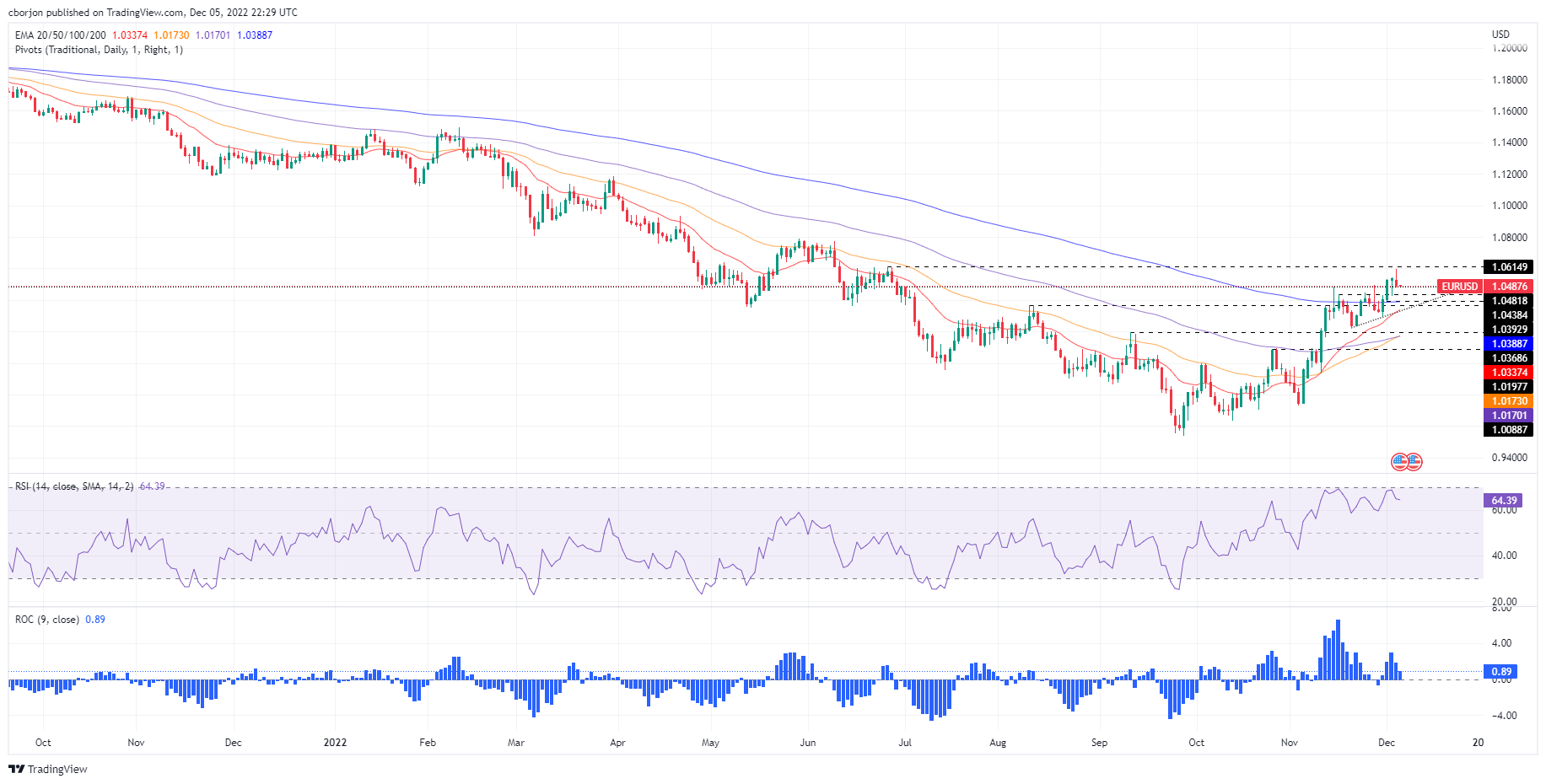- EUR/USD Price Analysis: Buying pressure fades as the Euro drops beneath 1.0500, eyeing the 200-DMA
Notícias do Mercado
EUR/USD Price Analysis: Buying pressure fades as the Euro drops beneath 1.0500, eyeing the 200-DMA
- EUR/USD tanks below the 1.0500 figure as buying pressure fades.
- EUR/USD Price Analysis: The 200-DMA at sight if the pair tumbles below 1.0400.
On Monday, the EUR/USD stumbled from around 1.0594 due to some factors, including positive economic data from the United States (US), and high US Treasury yields, amidst China’s easing Covid restrictions. At the time of writing, as the Asian Pacific session begins, the EUR/USD is trading at 1.0488.
EUR/USD Price Analysis: Technical outlook
From a daily chart perspective, the EUR/USD is upward biased once it cleared the 200-day Exponential Moving Average (EMA) on November 30, extending its gains to three consecutive days. However, Monday’s story is different, after US economic data revealed that the US Federal Reserve (Fed) would need to keep increasing rates. Therefore, the EUR/USD dropped and eyes a test of the December 2 daily low of 1.0392.
Albeit in bullish territory, the Relative Strength Index (RSI) aims downwards, while the Rate of Change (RoC) depicts buyer pressure is fading.
All that said, the EUR/USD path of least resistance is downward biased. Therefore, the EUR/USD first support would be the December 2 daily low of 1.0392. A breach of the latter will expose the 200-day EMA at 1.0388, followed by the 50-day EMA at 1.0173

.